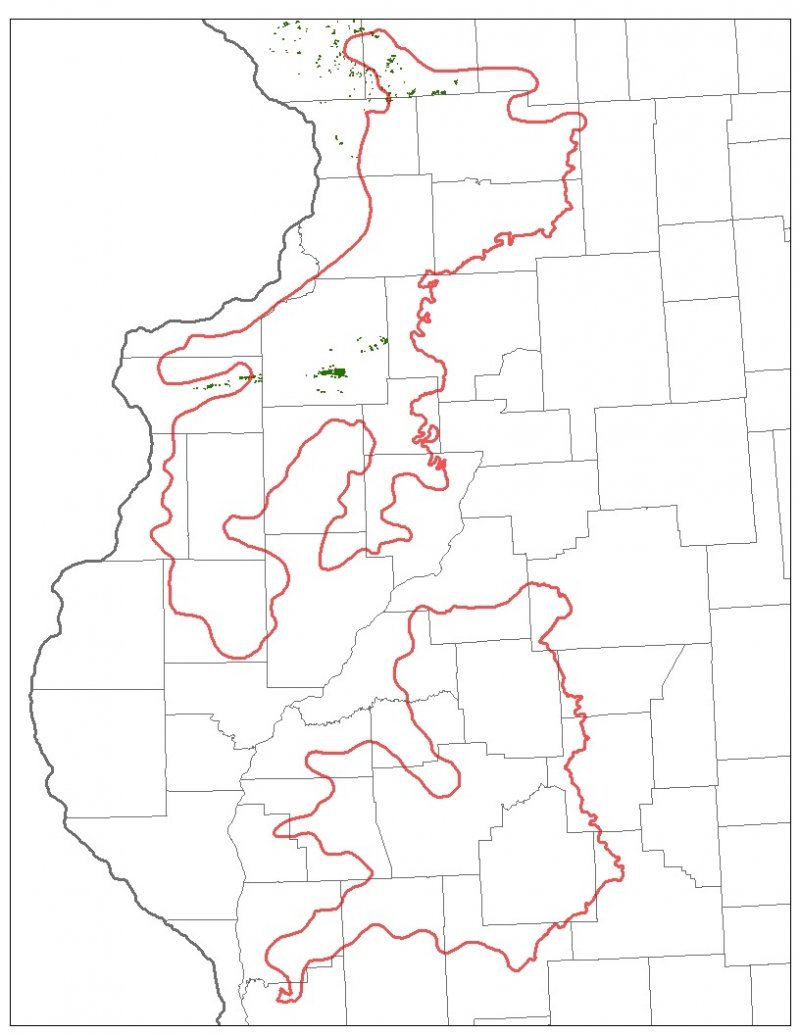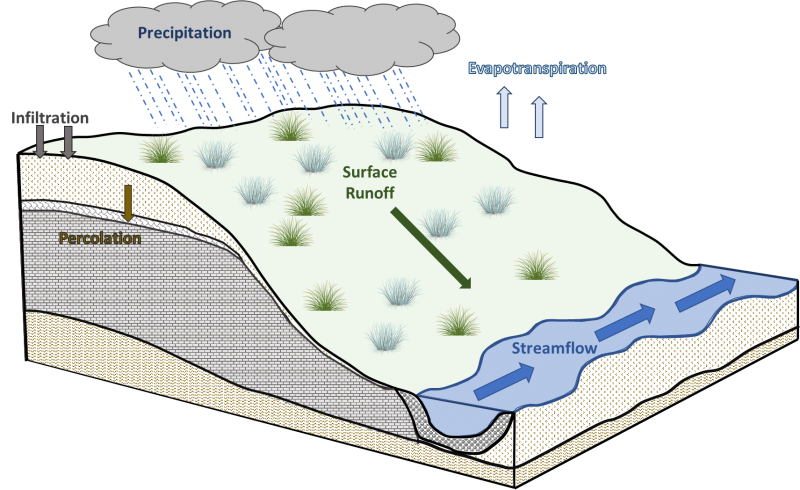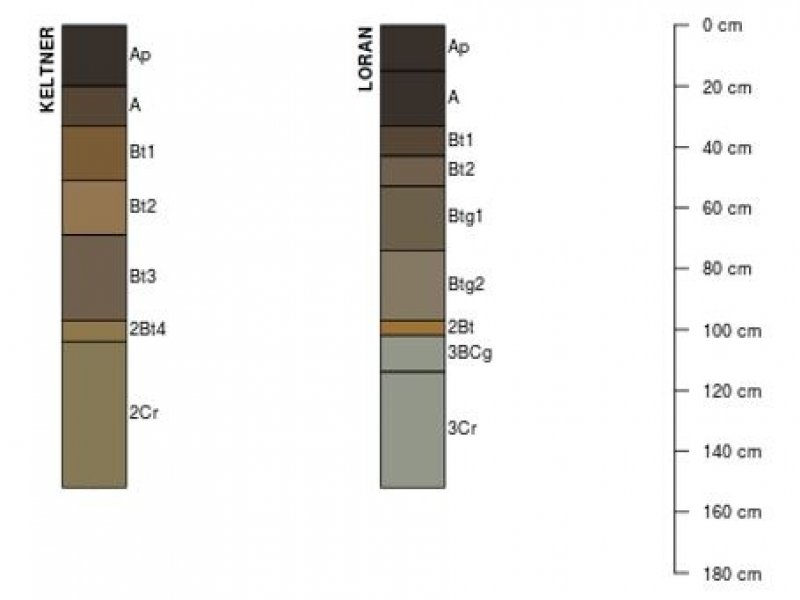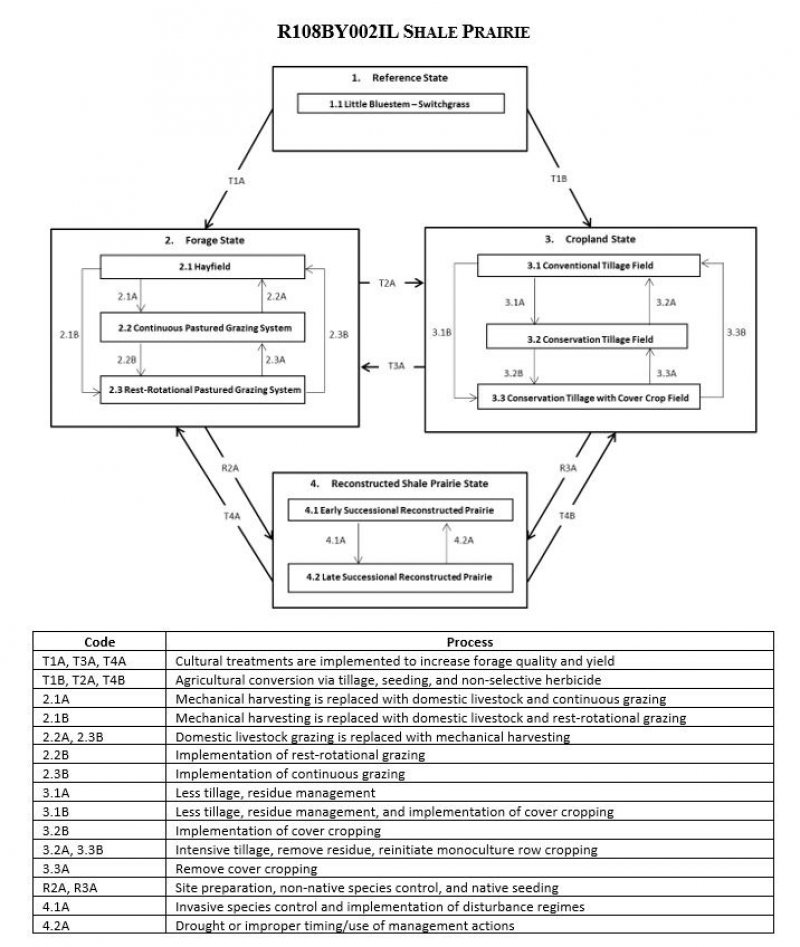
Natural Resources
Conservation Service
Ecological site R108XB002IL
Shale Prairie
Last updated: 5/27/2020
Accessed: 12/21/2025
General information
Provisional. A provisional ecological site description has undergone quality control and quality assurance review. It contains a working state and transition model and enough information to identify the ecological site.
Table 1. Dominant plant species
| Tree |
Not specified |
|---|---|
| Shrub |
Not specified |
| Herbaceous |
(1) Schizachyrium scoparium |
Physiographic features

Figure 1.
Climatic features
Table 2. Representative climatic features
| Frost-free period (characteristic range) | 134-141 days |
|---|---|
| Freeze-free period (characteristic range) | 155-159 days |
| Precipitation total (characteristic range) | 37 in |
| Frost-free period (actual range) | 133-142 days |
| Freeze-free period (actual range) | 153-161 days |
| Precipitation total (actual range) | 37-38 in |
| Frost-free period (average) | 138 days |
| Freeze-free period (average) | 157 days |
| Precipitation total (average) | 37 in |
Figure 2. Monthly precipitation range
Figure 3. Monthly minimum temperature range
Figure 4. Monthly maximum temperature range
Figure 5. Monthly average minimum and maximum temperature
Figure 6. Annual precipitation pattern
Figure 7. Annual average temperature pattern
Climate stations used
-
(1) STOCKTON 3 NNE [USC00118293], Stockton, IL
-
(2) KEWANEE 1 E [USC00114710], Kewanee, IL
Influencing water features

Figure 8.
Soil features

Figure 9.
Ecological dynamics
The MLRA lies within the tallgrass prairie ecosystem of the Midwest. The heterogeneous topography of the area results in variable microclimates and fuel matrices that in support prairies, savannas, and forests. Shale Prairies form an aspect of this vegetative continuum. This ecological site occurs on uplands on somewhat poorly to moderately well-drained soils. Species characteristic of this ecological site consist of herbaceous vegetation.
Fire is a critical disturbance factor that maintains Shale Prairies. Fire intensity typically consisted of periodic, low-intensity surface fires occurring every 1 to 3 years (LANDFIRE 2009). Ignition sources included summertime lightning strikes from convective storms and bimodal, human ignitions during the spring and fall seasons. Native Americans regularly set fires to improve sight lines for hunting, driving large game, improving grazing and browsing habitat, agricultural clearing, and enhancing vital ethnobotanical plants (Barrett 1980).
Drought and herbivory by native ungulates have also played a role in shaping this ecological site. The periodic episodes of reduced soil moisture in conjunction with the somewhat poorly to moderately well-drained soils have favored the proliferation of plant species tolerant of such conditions. Drought can also slow the growth of plants and result in dieback of certain species. Bison (Bos bison) grazing, while present, served a more limited role in community composition and structure than lands further west. Prairie elk (Cervus elaphus) and white-tailed deer (Odocoileus virginianus) likely contributed to woody species reduction but are also considered to be of a lesser impact compared to the west (LANDFIRE 2009). When coupled with fire, periods of drought and herbivory can further delay the establishment of woody vegetation (Pyne et al. 1996).
Today, Shale Prairies may be extirpated, having been type-converted to agricultural production land. A return to the historic plant community may not be possible following extensive land modification, but long-term conservation agriculture or prairie reconstruction efforts can help to restore some biotic diversity and ecological function. The state-and-transition model that follows provides a detailed description of each state, community phase, pathway, and transition. This model is based on available experimental research, field observations, literature reviews, professional consensus, and interpretations.
State and transition model

More interactive model formats are also available.
View Interactive Models
More interactive model formats are also available.
View Interactive Models
Click on state and transition labels to scroll to the respective text
State 1 submodel, plant communities
State 2 submodel, plant communities
State 3 submodel, plant communities
State 4 submodel, plant communities
State 1
Reference State
The reference plant community is categorized as a midgrass prairie community, dominated by herbaceous vegetation. The one community phase within the reference state is dependent on fire. Short fire intervals alter species composition, cover, and extent. Drought and grazing have more localized impacts in the reference phases, but do contribute to overall species composition, diversity, cover, and productivity.
Dominant plant species
-
little bluestem (Schizachyrium), other herbaceous
-
switchgrass (Panicum virgatum), other herbaceous
Community 1.1
Little Bluestem-Switchgrass
Little Bluestem – Switchgrass – Sites in this reference community phase are dominated by a mix of grasses and forbs. Vegetative cover is patchy to continuous (61 to 100 percent) and plants can reach heights greater than 3 feet tall (LANDFIRE 2009). Little bluestem, switchgrass, Indiangrass, big bluestem, and prairie dropseed are the dominant grasses. Characteristic forbs may include prairie blazing star (Liatris pycnostachya Michx.) and birdfoot violet (Viola pedata L.) (NatureServe 2018). Periodic replacement fires every 3 or 4 years will maintain this community phase (LANDFIRE 2009).
Dominant plant species
-
little bluestem (Schizachyrium), other herbaceous
-
switchgrass (Panicum virgatum), other herbaceous
State 2
Forage State
The forage state occurs when the reference state is converted to a farming system that emphasizes domestic livestock production known as grassland agriculture. Fire suppression, periodic cultural treatments (e.g., clipping, drainage, soil amendment applications, planting new species and/or cultivars, mechanical harvesting) and grazing by domesticated livestock transition and maintain this state (USDA-NRCS 2003). Early settlers seeded non-native species, such as smooth brome (Bromus inermis Leyss.) and Kentucky bluegrass (Poa pratensis L.), to help extend the grazing season (Smith 1998). Over time, as lands were continuously harvested or grazed by herds of cattle, the non-native species were able to spread and expand across the landscape, reducing the native species diversity and ecological function.
Community 2.1
Hayfield
Hayfield – Sites in this community phase consist of forage plants that are planted and mechanically harvested. Mechanical harvesting removes much of the aboveground biomass and nutrients that feed the soil microorganisms (Franzluebbers et al. 2000; USDA-NRCS 2003). As a result, soil biology is reduced leading to decreases in nutrient uptake by plants, soil organic matter, and soil aggregation. Frequent biomass removal can also reduce the site’s carbon sequestration capacity (Skinner 2008).
Community 2.2
Continuous Pastured Grazing System
Continuous Pastured Grazing System – This community phase is characterized by continuous grazing where domestic livestock graze a pasture for the entire season. Depending on stocking density, this can result in lower forage quality and productivity, weed invasions, and uneven pasture use. Continuous grazing can also increase the amount of bare ground and erosion and reduce soil organic matter, cation exchange capacity, water-holding capacity, and nutrient availability and retention (Bharati et al. 2002; Leake et al. 2004; Teague et al. 2011). Smooth brome, Kentucky bluegrass, and white clover (Trifolium repens L.) are common pasture species used in this phase. Their tolerance to continuous grazing has allowed these species to dominate, sometimes completely excluding the native vegetation.
Community 2.3
Rest-Rotational Pastured Grazing System
Rest-Rotation Pastured Grazing System – This community phase is characterized by rotational grazing where the pasture has been subdivided into several smaller paddocks. Through the development of a grazing plan, livestock utilize one or a few paddocks, while the remaining area is rested allowing plants to restore vigor and energy reserves, deepen root systems, develop seeds, as well as allow seedling establishment (Undersander et al. 2002; USDA-NRCS 2003). Rest-rotation pastured grazing systems include deferred rotation, rest rotation, high intensity – low frequency, and short duration methods. Vegetation is generally more diverse and can include orchardgrass (Dactylis glomerata L.), timothy (Phleum pretense L.), red clover (Trifolium pratense L.), and alfalfa (Medicago sativa L.). The addition of native prairie species can further bolster plant diversity and, in turn, soil function. This community phase promotes numerous ecosystem benefits including increasing biodiversity, preventing soil erosion, maintaining and enhancing soil quality, sequestering atmospheric carbon, and improving water yield and quality (USDA-NRCS 2003).
Pathway 2.1A
Community 2.1 to 2.2
Mechanical harvesting is replaced with domestic livestock and continuous grazing
Pathway 2.1B
Community 2.1 to 2.3
Mechanical harvesting is replaced with domestic livestock and continuous grazing
Pathway 2.2A
Community 2.2 to 2.1
Domestic livestock grazing is replaced with mechanical harvesting
Pathway 2.2B
Community 2.2 to 2.3
Implementation of rest-rotational grazing
Pathway 2.3B
Community 2.3 to 2.1
Domestic livestock grazing is replaced with mechanical harvesting
Pathway 2.3A
Community 2.3 to 2.2
Remove cover cropping
State 3
Cropland State
The continuous use of tillage, row-crop planting, and chemicals (i.e., herbicides, fertilizers, etc.) has effectively eliminated the reference community and many of its natural ecological functions in favor of crop production. Corn and soybeans are the dominant crops for the site, and oats (Avena L.) and alfalfa (Medicago sativa L.) may be rotated periodically. These areas are likely to remain in crop production for the foreseeable future.
Community 3.1
Conventional Tillage Field
Conventional Tillage Field – Sites in this community phase typically consist of monoculture row-cropping maintained by conventional tillage practices. They are cropped in either continuous corn or corn-soybean rotations. The frequent use of deep tillage, low crop diversity, and bare soil conditions during the non-growing season negatively impacts soil health. Under these practices, soil aggregation is reduced or destroyed, soil organic matter is reduced, erosion and runoff are increased, and infiltration is decreased, which can ultimately lead to undesirable changes in the hydrology of the watershed (Tomer et al. 2005).
Community 3.2
Conservation Tillage Field
Conservation Tillage Field – This community phase is characterized by rotational crop production that utilizes various conservation tillage methods to promote soil health and reduce erosion. Conservation tillage methods include strip-till, ridge-till, vertical-till, or no-till planting systems. Strip-till keeps seedbed preparation to narrow bands less than one-third the width of the row where crop residue and soil consolidation are left undisturbed in-between seedbed areas. Strip-till planting may be completed in the fall and nutrient application either occurs simultaneously or at the time of planting. Ridge-till uses specialized equipment to create ridges in the seedbed and vegetative residue is left on the surface in between the ridges. Weeds are controlled with herbicides and/or cultivation, seedbed ridges are rebuilt during cultivation, and soils are left undisturbed from harvest to planting. Vertical-till systems employ machinery that lightly tills the soil and cuts up crop residue, mixing some of the residue into the top few inches of the soil while leaving a large portion on the surface. No-till management is the most conservative, disturbing soils only at the time of planting and fertilizer application. Compared to conventional tillage systems, conservation tillage methods can improve soil ecosystem function by reducing soil erosion, increasing organic matter and water availability, improving water quality, and reducing soil compaction.
Community 3.3
Conservation Tillage with Cover Crop Field
Conservation Tillage Field/Alternative Crop Field – This community phase applies conservation tillage methods as described above as well as adds cover crop practices. Cover crops typically include nitrogen-fixing species (e.g., legumes), small grains (e.g., rye, wheat, oats), or forage covers (e.g., turnips, radishes, rapeseed). The addition of cover crops not only adds plant diversity but also promotes soil health by reducing soil erosion, limiting nitrogen leaching, suppressing weeds, increasing soil organic matter, and improving the overall soil ecosystem. In the case of small grain cover crops, surface cover and water infiltration are increased, while forage covers can be used to graze livestock or support local wildlife. Of the three community phases for this state, this phase promotes the greatest soil sustainability and improves ecological functioning within a cropland system.
Pathway 3.1A
Community 3.1 to 3.2
Less tillage, residue management
Pathway 3.1B
Community 3.1 to 3.3
Less tillage, residue management, and implementation of cover cropping
Pathway 3.2A
Community 3.2 to 3.1
Intensive tillage, remove residue and reinitialize monoculture row cropping
Pathway 3.2B
Community 3.2 to 3.3
Implementation of cover cropping
Pathway 3.3B
Community 3.3 to 3.1
Intensive tillage, remove residue and reinitialize monoculture row cropping
Pathway 3.3A
Community 3.3 to 3.2
Remove cover cropping
State 4
Reconstructed Shale Prairie State
Prairie reconstructions have become an important tool for repairing natural ecological functions and providing habitat protection for numerous grassland dependent species. Because the historic plant and soil biota communities of the tallgrass prairie were highly diverse with complex interrelationships, historic prairie replication cannot be guaranteed on landscapes that have been so extensively manipulated for extended timeframes (Kardol and Wardle 2010; Fierer et al. 2013). Therefore, ecological restoration should aim to aid the recovery of degraded, damaged, or destroyed ecosystems. A successful restoration will have the ability to structurally and functionally sustain itself, demonstrate resilience to the natural ranges of stress and disturbance, and create and maintain positive biotic and abiotic interactions (SER 2002). The reconstructed prairie state is the result of a long-term commitment involving a multi-step, adaptive management process. Diverse, species-rich seed mixes are important to utilize as they allow the site to undergo successional stages that exhibit changing composition and dominance over time (Smith et al. 2010). On-going management via prescribed fire and/or light grazing can help the site progress from an early successional community dominated by annuals and some weeds to a later seral stage composed of native, perennial grasses, forbs, and a few shrubs. Establishing a prescribed fire regimen that mimics natural disturbance patterns can increase native species cover and diversity while reducing cover of non-native forbs and grasses. Light grazing alone can help promote species richness, while grazing accompanied with fire can control the encroachment of woody vegetation (Brudvig et al. 2007).
Community 4.1
Early Successional Reconstructed Prairie
This community phase represents the early community assembly from prairie reconstruction and is highly dependent on the seed mix utilized and the timing and priority of planting operations. The seed mix should look to include a diverse mix of cool-season and warm-season annual and perennial grasses and forbs typical of the reference state (e.g., little bluestem, switchgrass, prairie blazing star). Cool-season annuals can help provide litter that promotes cool, moist soil conditions to the benefit of the other species in the seed mix. The first season following site preparation and seeding will typically result in annuals and other volunteer species forming a majority of the vegetative cover. Control of non-native species, particularly perennial species, is crucial at this point to ensure they do not establish before the native vegetation (Martin and Wilsey 2012). After the first season, native warm-season grasses should begin to become more prominent on the landscape.
Community 4.2
Late Successional Reconstructed Prairie
Appropriately timed disturbance regimes (e.g., prescribed fire) applied to the early successional community phase can help increase the beta diversity, pushing the site into a late successional community phase over time. While prairie communities are dominated by grasses, these species can suppress forb establishment and reduce overall diversity and ecological function (Martin and Wilsey 2006; Williams et al. 2007). Reducing accumulated plant litter from perennial bunchgrasses allows more light and nutrients to become available for forb recruitment, allowing greater ecosystem complexity (Wilsey 2008).
Pathway 4.1A
Community 4.1 to 4.2
Invasive species control and implementation of disturbance regimes
Pathway 4.2A
Community 4.2 to 4.1
Drought or improper timing/use of management actions
Transition T1A
State 1 to 2
Cultural treatments are implemented to increase forage quality and yield
Transition T1B
State 1 to 3
Agricultural conversion via tillage, seeding and non-selective herbicide
Transition T2A
State 2 to 3
Agricultural conversion via tillage, seeding and non-selective herbicide
Transition R2A
State 2 to 4
Site preparation, non-native species control and native seeding
Restoration pathway T3A
State 3 to 2
Cultural treatments are implemented to increase forage quality and yield
Transition R3A
State 3 to 4
Site preparation, non-native species control and native seeding
Restoration pathway T4A
State 4 to 2
Cultural treatments are implemented to increase forage quality and yield
Restoration pathway T4B
State 4 to 3
Agricultural conversion via tillage, seeding and non-selective herbicide
Additional community tables
Interpretations
Supporting information
Approval
Chris Tecklenburg, 5/27/2020
Rangeland health reference sheet
Interpreting Indicators of Rangeland Health is a qualitative assessment protocol used to determine ecosystem condition based on benchmark characteristics described in the Reference Sheet. A suite of 17 (or more) indicators are typically considered in an assessment. The ecological site(s) representative of an assessment location must be known prior to applying the protocol and must be verified based on soils and climate. Current plant community cannot be used to identify the ecological site.
| Author(s)/participant(s) | |
|---|---|
| Contact for lead author | |
| Date | 09/07/2022 |
| Approved by | Chris Tecklenburg |
| Approval date | |
| Composition (Indicators 10 and 12) based on | Annual Production |
Indicators
-
Number and extent of rills:
-
Presence of water flow patterns:
-
Number and height of erosional pedestals or terracettes:
-
Bare ground from Ecological Site Description or other studies (rock, litter, lichen, moss, plant canopy are not bare ground):
-
Number of gullies and erosion associated with gullies:
-
Extent of wind scoured, blowouts and/or depositional areas:
-
Amount of litter movement (describe size and distance expected to travel):
-
Soil surface (top few mm) resistance to erosion (stability values are averages - most sites will show a range of values):
-
Soil surface structure and SOM content (include type of structure and A-horizon color and thickness):
-
Effect of community phase composition (relative proportion of different functional groups) and spatial distribution on infiltration and runoff:
-
Presence and thickness of compaction layer (usually none; describe soil profile features which may be mistaken for compaction on this site):
-
Functional/Structural Groups (list in order of descending dominance by above-ground annual-production or live foliar cover using symbols: >>, >, = to indicate much greater than, greater than, and equal to):
Dominant:
Sub-dominant:
Other:
Additional:
-
Amount of plant mortality and decadence (include which functional groups are expected to show mortality or decadence):
-
Average percent litter cover (%) and depth ( in):
-
Expected annual annual-production (this is TOTAL above-ground annual-production, not just forage annual-production):
-
Potential invasive (including noxious) species (native and non-native). List species which BOTH characterize degraded states and have the potential to become a dominant or co-dominant species on the ecological site if their future establishment and growth is not actively controlled by management interventions. Species that become dominant for only one to several years (e.g., short-term response to drought or wildfire) are not invasive plants. Note that unlike other indicators, we are describing what is NOT expected in the reference state for the ecological site:
-
Perennial plant reproductive capability:
Print Options
Sections
Font
Other
The Ecosystem Dynamics Interpretive Tool is an information system framework developed by the USDA-ARS Jornada Experimental Range, USDA Natural Resources Conservation Service, and New Mexico State University.
Click on box and path labels to scroll to the respective text.